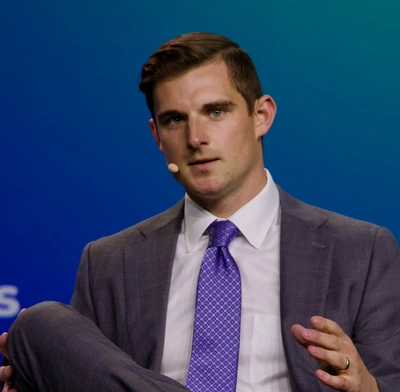Tether is seeking to offer two separate dollar-pegged stablecoins to US consumers, according to the company’s recently appointed US chief Bo Hines.
Americans Will be Able to Choose Between Tether's USDT & USAT, Hines Says

Speaking on a panel at Korea Blockchain Week in late September, Hines used the stage to clarify Tether’s two-pronged approach: continuing to support USDT, the company’s flagship, while also rolling out USAT, a newer token backed explicitly by US assets and designed in response to the GENIUS Act.
According to Hines, Tether’s goal is not to divide the market between domestic and international users, but to bring both coins under the same compliance umbrella.
“I believe that both USDT and USAT will meet the same compliance standards outlined in the GENIUS Act,” he said, referring to the legislation the US Congress passed in July.
Compliance concerns
Hines argued that positioning Tether as fully compliant in the United States will help the company engage more closely with regulators and financial institutions, addressing long-standing concerns about oversight and legitimacy.
The US has been catching up other jurisdictions such as Singapore and Japan by introducing cryptocurrency-focused rules and a framework for stablecoins, triggering a global competition to regulate digital assets. Tether CEO Paolo Ardoino left the public guessing earlier this year on how the company would approach the US domestic market when he teased the development of USAT in a series of media interviews. He continues to face questions over the transparency of corporate auditing and reporting.
Regulatory experts hoping for a technical panel in the Korean capital Seoul were disappointed, as the session was more of a policy signaling exercise: Tether wants to show it can operate inside the US regulatory perimeter, retain global relevance through reciprocity, and frame the GENIUS Act as the blueprint for the world. The panel dynamic between participants from Tether, Cantor Fitzgerald and Stable underscored that the next phase of competition will hinge on who can claim regulatory legitimacy while still delivering on scale, liquidity and trust.
Hines was joined on the stage Seoul by Richard Wu, Managing Director at Cantor Fitzgerald – the financial services firm run for nearly three decades by US Commerce Secretary Howard Lutnick – and Brian Mehler, co-CEO of Stable, a blockchain network. Wu stressed that banks and asset managers are looking for regulatory clarity before engaging meaningfully with stablecoins, while Mehler noted that issuers are in a race not just to satisfy regulators but also to earn user trust and differentiate with features like transparency, stability, and potential yield.
USAT rationale
The creation of USAT was widely viewed as Tether’s response to the GENIUS Act’s requirements for stablecoins backed by US-based reserves. Hines’s appointment as CEO of Tether USAT –following his brief tenure as Executive Director of the White House’s digital assets working group – underscores the company’s intent to operate in Washington with a stronger institutional and policy presence.
The launch of USAT sparked speculation that it would serve as a US-only product, while USDT would remain the rest-of-the-world token. This interpretation was reinforced by USDT’s history of regulatory friction, including its effective removal from European markets after the MiCAR framework took effect earlier this year.
Reciprocity clause
Hines dismissed this idea, pointing instead to the GENIUS Act’s reciprocity clause (Article 18), which he said allows stablecoins from jurisdictions with equivalent regulatory frameworks to operate within the US.
“We expect the US to apply reciprocity to Tether International,” Hines emphasized, suggesting that USDT will not be sidelined in the American market.
US playbook
Hines also positioned the GENIUS Act as a model for other countries to follow, portraying it as a strong and clear standard that could harmonize the global regulatory landscape.
“I want to advise other regulatory frameworks, including Korea, to follow what the US has laid out,” he said. “We are very proud of what we have built… this is a clear and strong framework that we are continuing to innovate with through various technological endeavours.”
Hines will repeat the exercise at a panel at TOKEN2049 Singapore on 2 Oct when he will be joined by his CEO Ardoino and reunited with Cantor Fitzgerald – this time with the firm's incumbent Chairman Brandon Lutnick, son of Commerce Secretary and cabinet member Howard Lutnick.
Tether is no longer just defending its dominance through liquidity and scale. It's trying to recast itself as the standard bearer for regulatory legitimacy. Whether USAT becomes the compliant gateway into Washington, or a stepping stone toward global reciprocity, the company is signaling that the battle for the future of stablecoins will be fought as much in courtrooms and capitals as on blockchains.







